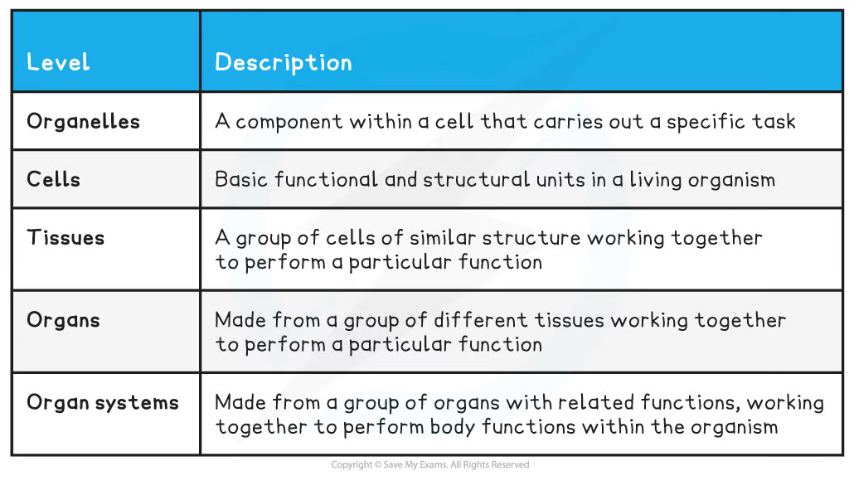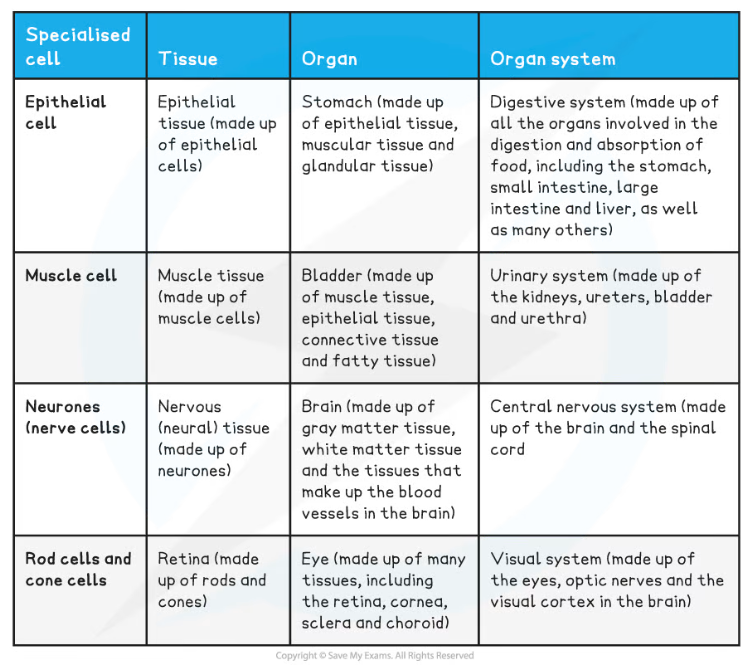- 翰林提供学术活动、国际课程、科研项目一站式留学背景提升服务!
- 400 888 0080
Edexcel A (SNAB) A Level Biology:复习笔记3.1.4 Organisation of Cells
Organisation of Cells
- Cell theory states that cells are the basic functional unit of all living organisms
- Cells can become specialised for specific functions, e.g.
- Epithelial cells in the small intestine are specialised to absorb food efficiently
- Red blood cells are specialised to transport oxygen
- Xylem cells in plants are specialised to allow the transport of water around a plant
- In multicellular organisms specialised cells of the same type group together to form tissues
- A tissue is a group of cells that work together to perform a particular function, e.g.
- Epithelial cells group together to form epithelial tissue the function of which, in the small intestine, is to absorb food
- Muscle cells group together to form muscle tissue, the function of which is to contract in order to move parts of the body
- A tissue is a group of cells that work together to perform a particular function, e.g.
- Different tissues can group together to form organs
- An organ is a group of tissues working together to perform a particular function, e.g.
- Many different tissues, including cardiac muscle tissue, blood vessel tissues and connective tissue, group together to form the heart, enabling it to function to pump blood around the body
- Tissues including palisade mesophyll, spongy mesophyll, and vascular tissue, group together in plants to form leaves, enabling them to perform photosynthesis effectively
- An organ is a group of tissues working together to perform a particular function, e.g.
- Different organs work together to form organ systems
- An organ system is a group of organs working together to perform a particular function, e.g.
- The heart and blood vessels work together to form the circulatory system, the job of which is to allow blood to circulate around the body
- The stomach, pancreas, small intestine, and large intestine work together to form the digestive system, the job of which is to digest food and absorb nutrients
- An organ system is a group of organs working together to perform a particular function, e.g.
Levels of Organisation Table

Examples of Specialised Cells and their Associated Tissues, Organs and Organ Systems Table

转载自savemyexams

早鸟钜惠!翰林2025暑期班课上线

最新发布
© 2025. All Rights Reserved. 沪ICP备2023009024号-1








